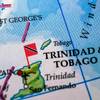MOL Works on Environmental Agenda
Japanese shipping giant Mitsui O.S.K. Lines (MOL) formulated MOL Group Environmental Vision 2030 to present our cutting-edge initiatives for environmental preservation.
"Shpping companies are responsible for undertaking the marine transportation vital to the infrastructure underpinning people's daily lives worldwide," it said.
MOL established a policy to equip its vessels with ballast water treatment systems in fiscal year 2014, ahead of the issuance of the Ballast Water Management Convention in September 2017.
As of April 2019, 142 MOL Group-owned vessels are equipped with ballast water treatment systems. Ballast water treatment systems protect marine biodiversity by reducing the trans-boundary movement of microbes and bacteria contained in ballast water, which is loaded to provide additional weight to stabilize the hull of a ship.
MOL delivered the LNG-fueled tugboat in February 2019. LNG-fueled vessels use liquefied natural gas (LNG) as fuel instead of conventional heavy fuel oil. Combustion of LNG virtually eliminates SOx emissions, compared to heavy fuel oil, and also results in lower emissions of nitrogen oxide (NOx) and carbon dioxide (CO2).
LNG fuel bunkering vessel supplies LNG-fueled vessels. It will contribute to the wider use of LNG as a fuel for merchant vessels. In February 2018, MOL signed a long-term charter contract for the world's largest LNG bunkering vessel.
It is slated to supply LNG fuel to LNG-fueled mega containerships in Northern Europe starting in 2020.
In February 2019, MOL and Singapore's state energy company signed a long-term charter contract for an LNG bunkering vessel.
MOL also participates in the Wind Challenger Plan, a joint industry-academia research project led by Tokyo University that was launched in 2009. The project focuses on using advanced sails to provide propulsion for merchant vessels. It aims to reduce vessels' fuel consumption and CO2 emissions by maximizing the use of wind power.
The research and verification test phase was completed in September 2017, and the demonstration test and commercialization phase began in October of that year. MOL will select a vessel to equip with sails within fiscal 2019, aiming to start operation in 2022.














